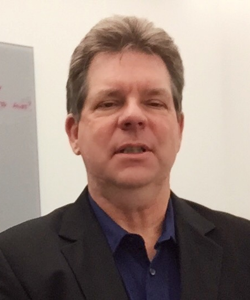Some time ago–in the dark ages of computing–the corporate world ran on mainframes, carefully managed by a small group of IT personnel who tended to the needs of their machines, and who answered to their management masters. Access to these expensive resources was tightly controlled and used only as management deemed proper.

This was the “Priesthood of IT”–the class of members of this new computing religion who controlled access to the inner sanctum by the unwashed masses, and who reported to one person at the top.
Then, in the 1970s, Lutheranism came to IT, in the form of desktop PCs–computers that could be used by an individual, with programs like VisiCalc and WordStar that could work with data in the way they chose, to achieve results they saw as useful. At first this was not an easy thing to do: access to the needed data was often hard to get, and in some cases attempting to “do the work for yourself” could result in losing your job.
(As an aside, it’s interesting to note that it was sales people who successfully led the charge to take data into their own hands–they could prevent the firing of a high-performing salesman whose sales were boosted by what they did, even if it was not according to the book. All the rest of us followed.)
Once this new religion had taken hold, many savants said that the days of the IT priesthood were over. Now longer would supplicants have to deliver their computing requests to an intermediary who could allow or deny on a whim. There was a “democratization” of computing, and that was seen as good. Out with the priesthood!
And yet….
I look around at the world at large as it stands today and I think we still have an IT priesthood–but this time, it stems from a different source.
The prior priesthood was based on “ownership”of expensive resources–the computers, disk drives, tape units, and the like that were needed. A single group or department was unlikely to have the capital at its disposal to afford entry to this terra nova.
The new priesthood is, I think, based on something else.
Computing resources have come down orders of magnitude in price since their initial introduction. For only a few hundred dollars one can have computing that is 100,000 times faster than when personal computing was first introduced, at at less than 1/10 the price.
But dollars don’t tell the whole story here.
Modern computers come with applications that make knowledge of the details of the underlying machinery unimportant. Just as you don’t have to know the operations of the engine under the hood of your car to drive it, you don’t have to know the details of the hardware and software in your desktop machine.
But this abstraction comes at a cost.
With no knowledge of how your vehicle’s engine work, you are left to call for help when the car coasts to the side of the road, the engine inert. What’s under the hood is a mystery, mostly, and you have to rely on experts to deal with unexpected behaviors.
In the case of our cars, that’s a tradeoff we often willingly accept. Cars are reliable, and the time and effort to learn anything other than how to operate them is just not worth it. If the gas gauge is near “empty” the put gasoline in it. If the taillights stop working, change the bulb. Easy.
The situation is similar for the computers we and others work with every day. Most computer users don’t know how the computer, or its connection to the network, operate. They don’t need to. It’s enough to know if the Internet connection stops working, you reboot the laptop. If that doesn’t fix the problem, reboot the router.
Unlike our vehicles, the computers we use it seems that to be somewhat less reliable, or so it seems. They seem to fail at the worst possible time, in ways that are a mystery to most users, and with the only solution being “reboot and try again”. Knowledge of how the computer and its attendant software works is lacking in most users.
But, as IT professionals, we’ve all had the experience of what that lack of knowledge can do. I’ve gotten calls from family members and friends, asking for help getting their computer problem fixed when the reboots don’t work. The issue is usually not complex and the fix takes little time.
I find myself being a representative of the new priesthood, called to absolve computer users of their sins, and return them to the good grace of the computing gods.
It’s flattering that IT technologists are in such a position of prestige and power, but I believe this situation represents a problem that needs to be resolved.
Why?
As IT professionals I believe we have an moral and ethical responsibility to make the technology we help bring to market serve the users‘ needs, and to do so in a manner that doesn’t require constant support from a limited group of knowledgeable professionals to be useful.
A product that cannot be used productively without support–except for unique and rate situations–from a professional is a product that has failed.
Those of us who know well the details of the myriad computing systems that drive everyday life, and who can provide wise counsel to the businesses who pay to establish and maintain these system, would do well to remember that we are not the ultimate decision-makers for how such work is done.
More important, perhaps, is that business decision-makers sometimes base their product design and development decisions on factors that do not include whether the end-user will require regular support to effectively use the product.
It is our job, I firmly believe, as IT professionals to help our clients understand that it is important to make the delivered product as robust as possible (not usually a problem) and that in most expected use-cases it should not require knowledge beyond what a non-technical user should be expected to have.
Providing easy-to-access customer support should, of course, be included in the product delivery plan for those unexpected failure cases that may happen.
This obligation to provide such a product doesn’t mean that there won’t always be IT professionals in demand, or that the IT priesthood will never fully disappear. It just means that we can concentrate on getting good products to market.

 English | EN
English | EN 